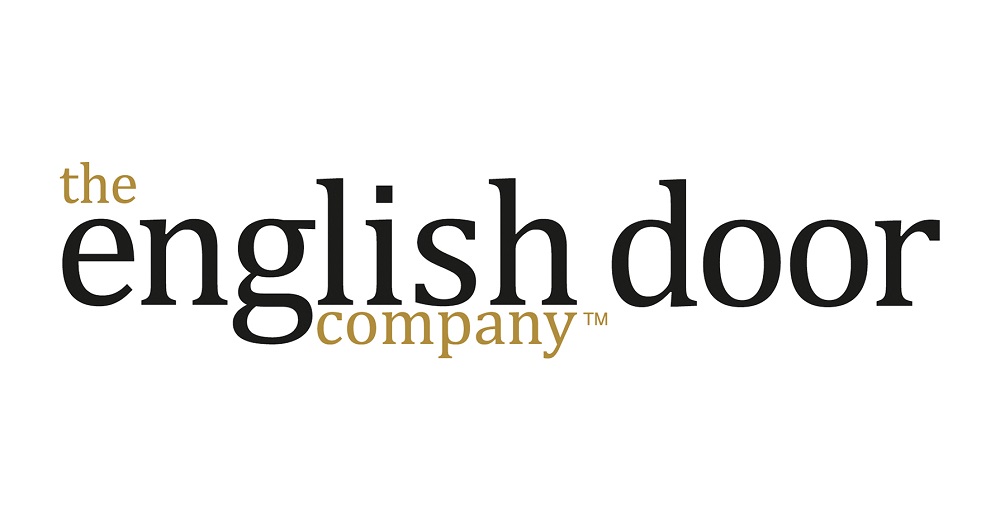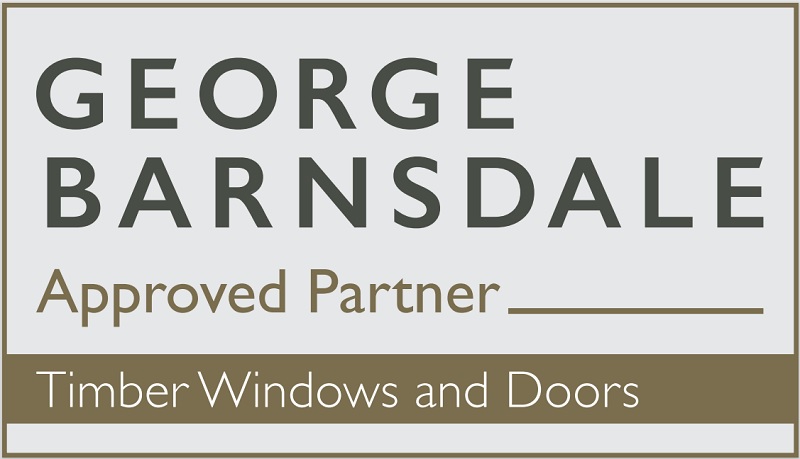Windows
Bay window
Bay windows are a specific window style that protrudes from the wall of a property, with the brick wall below the window being the same shape as the window so, therefore, supporting the weight of the window itself.
Typically, bay windows feature 3 windows; a picture window with two other windows on either side, that are fitted at angles of 90, 130, and 150 degrees.
Bespoke window
Windows that are made-to-order for a particular customer. Bespoke windows are generally not the conventional rectangular window shape.
Bottom hung window
The window opens from the bottom of the frame, e.g. a sliding sash window or a bathroom window.
Bottom rail
The horizontal bar across the bottom of the window frame, which sits above the cill.
Bow window
Bow windows are recognised by their curved shape and the way they extend outwards from a building. Typically, bow windows feature 4-5 windows that are fitted at an angle of around 10 degrees.
Casement window
A window sash that generally opens outwards from the side of the frame, available in uPVC, timber, and aluminium.
Centre hinge
The window sash revolves on the central hinge. Typically fully reversible, centre hinged windows allow for a wider opening and easy cleaning.
Cill
The lowest horizontal ledge or bar that forms the bottom of the window frame.
Double glazing
Designed to reduce heat loss, noise, and UV rays, double glazing consists of two panes of glass with a gas-filled space in-between.
Double hung
A double hung window has two moveable sashes, allowing both parts of the window to open and shut, e.g. a sliding sash window.
Fixed light window
A fixed light is a window that cannot be opened, generally used to enhance far-reaching views and increase light and warmth.
Flush sash window
Flush sash windows fit sleekly into the window frame, instead of slightly overlapping the window frame.
Glazing bars
Glazing bars divide and hold individual panes of glass securely in place. Often designed into a grid pattern, they are typically used to create a heritage look.
Head jamb
The first horizontal bar that forms the top of the window frame.
Heritage window
Heritage windows are suited to period and historic properties and are either made from natural timber or high-performance uPVC that replicates the authentic appearance of timber windows. Heritage windows are designed to meet conservation guidelines.
Leaded bars
Leaded glazing bars are the thin strips of wood or metal that were originally used to separate and hold panes of glass in place. Today they provide a heritage-inspired, decorative effect – the most popular designs being diamond and square bars.
Sash
Fitting inside the window frame, the sash is the section that moves and holds the glass panes safely in place.
Secondary glazing
A single pane of glass fitted over existing single glazed windows, ideal for windows that cannot be altered due to planning restrictions, e.g. listed buildings and conservation areas.
Side hung
The window opens out from the side of the frame, e.g. a casement window.
Single hung
A single hung window has one moveable sash, keeping the top sash in place and the bottom sash in full operation, e.g. a sliding sash window.
Sliding sash window/vertical sliding window
A window that consists of one or two movable panels, that vertically slide open and closed via a traditional counterweight system or a modern spring balance arrangement. Often divided into sections of 4 or 6, these windows are commonly associated with Georgian and Victorian architecture and are available in timber or uPVC profiles.
Stile
The vertical edges of the window.
Stormproof casement window
Stormproof windows, also known as 'lipped casements', slightly overlap the window frame to stand slightly apart from the window.
Tilt & turn window
A window that can either be tilted via a top or bottom hinge, offering a small gap at the top for safe ventilation or opened inwards from the side of the frame (like a traditional casement window) for easy cleaning. These types of windows are particularly popular in high-rise buildings or homes where exterior access is difficult.
Top hung
The window swings open from the top of the frame, e.g. a fire escape window or a roof window.
Top rail
The horizontal bar across the top of the window frame, which sits underneath the Head Jamb.
Trickle vents
A trickle vent is a small slot or opening on a window that allows a room to remain ventilated when the window is closed.
Triple glazing
Designed to reduce heat loss, noise and UV rays even further, triple glazing consists of 3 panes of glass with two gas-filled spaces in-between.
U-value
U-values measure how easily heat can pass through a material; the lower the U-value, the more efficient the material. By law, window manufacturers in England and Wales must demonstrate that their windows comply with the latest energy efficiency requirements, which is usually done by declaring the windows' U-value. U-values for windows and doors must meet minimum criteria, as stated by the latest building regulations.
Vertical jamb
The vertical bars that form the sides of the window.
WER
Based on a scale of G to A+ (A+ being the most efficient), the Window Energy Rating (WER) indicates how energy efficient your windows are.
Window finishes & materials
Astragal bars
Traditionally, windows were constructed with smaller panes of glass to create larger windows in the most economical way. These smaller panes of glass were connected together with slimline bars. These days, these authentic bars are only used for decorative purposes. Astragal bars are fitted to the window pane internally and externally to give the effect of multiple panes of glass.
Bevelled / chamfered frames
Bevelled or chamfered windows have a flat, sloped profile, ideal for both traditional and new buildings.
Georgian bars
Georgian bars are also used to create period style windows, however, they are sealed in between the layers of glazing rather than internally and externally.
Low-e glass
Low-emissivity glass is a very thin coating applied to windows that allows heat from the sun to enter and then reflects it back into the room, which works to reduce heating demand and energy bills.
Mullion
A mullion is the vertical load-bearing section that separates individual windows. A traditional example of a mullion is in a typical church building, where individual windows are separated by stone mullions. They can be made of virtually any material, with modern mullions commonly made from timber, aluminium, steel and uPVC.
Multi-chambered profiles
Windows that feature multi-chambered profiles boast higher thermal efficient qualities, thanks to intricate symmetrical chambers within the window profile. These chambers break up currents of cold air and lock in pockets of warm air to keep homes at a pleasant temperature, for longer.
Muntin
A muntin is another term for a glazing bar; the strip that divides and holds individual panes of glass securely in place.
Ovolo frames
Ovolo or sculptured windows have a curved, decorative profile that’s ideal for period properties.
Sash horn
Sash horns are an original feature of authentic sliding sash windows and are usually curved or constructed in an elegant 's' shape design. Sash horns prevent timber windows from opening too much or getting jammed, as well as supporting the intricate elements of the window. As manufacturing technology has evolved, uPVC sliding sash windows have retained the classic sash horn detailing for decorative purposes only.
Transom
A transom is the horizontal version of the mullion and acts as a strengthening crossbar.
Warm edge spacer bar
Positioned around the inside edge of the glass, warm edge spacer bars keep double or triple glazed window panes apart. This proactively reduces heat transfer and external noise, as well as preventing condensation from forming on your windows. The term ‘warm edge’ is used because foam spacer bars are up to 950% less conductive than aluminium.
Doors
Bi-fold doors
Also known as a sliding-folding door or a continental folding door, bi-fold doors feature a concertina style fold that stack the door panels neatly to one side. Available in uPVC or aluminium, these cutting-edge doors are perfect for entertaining and bringing the outside in.
DSER
Based on a scale of E to A++ (A++ being the most efficient), the Door Set Energy Rating (DSER) indicates how energy efficient your doors are.
French doors
French doors feature a set of two glass panels, that can be opened inward or outward. Maximising the space in your home and garden, this continental door style is a popular addition to patio and conservatory entrances.
Heritage door
Heritage doors are suited to period and historic properties and are either made from natural timber or high-performance uPVC that replicates the authentic appearance of a wooden door. Heritage doors are designed to meet conservation guidelines.
Low threshold
Clearly separating the outside from the inside, the threshold forms the step at the bottom of a doorway. Low thresholds are available in a range of sizes and considerably reduce the height of the step to provide a smoother transition - which is ideal for occupants with mobility issues and families with young children.
Sidelights
Also known as sidelites, sidelights are narrow windows or panes of glass typically set alongside a door or a larger window.
Sliding patio door
Sliding patio doors feature large expanses of glass that slide sideways to provide easy access to the building. Available in uPVC, and aluminium, these space-saving doors are perfect for making the most of good weather and far-reaching views.
Traffic door
A traffic door is a conventional door that is built into a bifold door system. Depending on the number of door leaves, a traffic door can be hinged to the door frame and operate independently or attached to the bifold system. Traffic doors save time in areas where it isn't practical to continually open the whole bifold system, as well as retaining warmth and saving money on heating bills throughout the winter months.
Door security
Dog bolts
Hinge bolts (AKA ‘dog bolts’) are steel pins fitted into the hinge side of timber door-leaves to reinforce exposed hinges, or to inward opening doors that could be vulnerable to kicking or barging.
Multi-point locking
Multi-point locking systems dramatically heighten door security, by bolting the door into the frame and locking at multiple points with the simple turn of a key.
Door finishes & materials
ABS skin
Acrylonitrile Butadiene Styrene (ABS) is the same material used to make Lego. It is a coating used on timber core composite doors to strengthen them, actively resisting fading, discoloration, and scratches.
Aluminium
Aluminium has become a favourable construction material due to its recyclable, lightweight, durable and corrosion-resistant features. Our aluminium doors are ideal for homeowners looking for an ultramodern door system that's strong, easy to use and can be moulded into virtually any shape or size.
Composite
The term 'composite' refers to the way the door is made up of several elements to offer superior strength. Our composite doors combine durable & lightweight glass-reinforced plastic (GRP), a robust polyurethane foam core, and resilient frames.
GRP skin
Glass-reinforced plastic (GRP) is a coating used on high-density polyurethane foam filled composite doors to strengthen them. GRP actively resists issues such as warping, twisting, rusting, peeling, and fading.
Polyamide break
Also known as a thermal break barrier, polyamide breaks are a plastic barrier placed between the inner and outer frame of an aluminium door to make it more energy efficient.
Safety glass
Also known as toughened or tempered glass, safety glass is made with controlled chemicals & cooling methods that increase its strength; safely crumbling into small pieces when it's broken.
Timber/wood
Timber has been the number one choice for doors since the beginning of time. Natural in appearance and incredibly durable, it is now the ideal option for heritage homes looking to retain and enhance character.
uPVC
uPVC stands for 'Unplasticized Polyvinyl Chloride'. It is a popular door material due to its durability, weather resistance, and low maintenance qualities.
Conservatories
Conservatory
A room that's mainly made of glass, attached to one side of a house. Conservatories must be separated from the rest of the property by external doors and windows and fitted with their own independent heating system that's controlled separately from the rest of the house. There is also a collection of rules and regulations that the structure must adhere to, to avoid having to obtain planning permission to build it.
Cornice
The purpose of a cornice is to protect the structure from rainwater and hide the conservatory guttering and rafter ends, for a clean and attractive finish. Cornices can be added to new or existing conservatories, orangeries, or extensions.
Edwardian/Georgian Conservatory
Also known as Georgian conservatories, Edwardian conservatories have a square or rectangular floor, a sloping ridged roof, and symmetrical flat sides.
Gable conservatory
A variant of the Edwardian/Georgian conservatory style, Gable conservatories have a rectangular floor with a triangular front and a high vaulted roof that meets in the middle.
Internal downlights
Spotlights that are integrated into an extensions’ ceiling.
Internal plastered soffit system
A way to create a modern look inside a conservatory, offering effective ventilation so that air can flow freely through the roof area to provide additional protection against condensation.
Lantern roofs
Lantern roofs are made up of angled glazed panels that allow the light to flow in, which creates a stunning architectural glazed focal point. Lantern roofs can be added to conservatories, orangeries, extensions, and any flat-roofed structure.
Lean-to conservatory
Lean-to conservatories have a variable sloped roof that leans onto the main property.
P-shaped conservatory
Ideal for larger, detached properties, P shape conservatories combine the long and rectangular Lean-to style with the curved Victorian conservatory style.
T-shaped conservatory
Ideal for larger properties, T shape conservatories are known as a 'combination conservatory'. Featuring a central projection, they can be Victorian, Gable, or Edwardian/Georgian in style.
Orangery
Orangeries were originally built by wealthy landowners to protect their valuable citrus trees from wintery, icy conditions. Now added to homes in need of more space, light, and character, orangeries feature brick and solid sections; ideally bridging the gap between conservatories and extensions.
Victorian conservatory
Victorian conservatories have elegant pitched roofs, with three or five facets (sides) that create a beautiful curved appearance.
Conservatory finishes & materials
Clad over roof
A conservatory clad over is when insulation, timber, tiles, and plasterboard are typically placed over and fitted to an existing polycarbonate or glass conservatory roof. Read our blog post to find out why they should be avoided at all costs.
Crestings & finials
Typically recognised as stylish spikes positioned on top of conservatory or orangery roof frames, other than a decorative finishing touch, the primary function of crestings and finials is to deter pigeons and other birds from perching on the roof and making a mess and/or causing damage.
Insulated columns
5 times more thermally efficient than brick columns, insulated columns improve an extensions' energy efficiency thanks to their carbon-enriched filling, whilst adding a stylish modern twist.
Self-cleaning glass
Glass is covered with an ultra-thin coating that reacts with daylight to break down dirt.
Polycarbonate roofing
Polycarbonate is a robust thermoplastic material, mainly used as a cost-effective, lightweight, and tough conservatory roofing option.
General
Home improvement finance
Home improvement packages allow you to improve your home on a payment plan that suits your lifestyle.
Anti-jemmy bars
Secure metal strips that are fitted to the lock edge of outward opening doors and windows that prevent them from being prised open.
AONB
Local planning authorities have the power to designate Areas of Outstanding Natural Beauty (AONB) for conservation purposes under the Countryside and Rights of Way Act 2000 (CROW Act) if they deem the area to have significant landscape value. AONBs face restrictions on certain improvements.
Argon gas cavity infills
Argon gas is inserted between the panes of glass in a window or door to increase its energy efficiency, due to the fact that argon has 34% lower thermal conductivity than air.
Case study
Case studies provide potential customers with useful examples of previous installation work.
Conservation area
The official definition is "an area of notable environmental or historical interest or importance which is protected by law against undesirable changes". Conservation areas face restrictions on certain improvements.
Fanlight
Also known as a 'transom window' in the U.S, a fanlight is a small semi-circular or rectangular window located above a door or another window.
FENSA accredited
If a double glazing installer is FENSA accredited it means that their work won't need separate Building Regulation approval from the Local Authority.
A new room or building that's added on to an existing building.
A new room or building that's added on to an existing building.
Integral blinds
Blinds that are enclosed in between double or triple glazed windows and doors.
Listed building
The official definition is "a building is listed when it is of special architectural or historic interest considered to be of national importance and therefore worth protecting. Listed buildings face restrictions on certain improvements.
PAS 24 accreditation
If a home improvement product has been PAS 24 accredited, it means that it has met rigorous test standards used to assess its security performance.
Show centre
Also known as a showroom, a show centre offers a large display of products for sale.
TGAS accredited
If a double glazing installer is TGAS accredited it means that the customer is fully covered by an official alternative dispute resolution scheme, in the unlikely event that something should go wrong.
Thermal break barriers
Used within high-quality aluminium, thermal breaks are plastic barriers placed between the inner and outer frame to prevent heat from escaping.
TrustMark accredited
If a double glazing installer is TrustMark accredited it means that they exhibit good trading practices, customer service, and technical competence.
Visible light transmittance
Also known as VLT, visible light transmittance measures the amount of daylight that can pass through a glazing system. So, when a glazing system has a low tint percentage it means there are more restrictions on exterior light entering the space.
Warranty
A written guarantee issued to the customer, that promises to repair or replace a particular product (if necessary) within a specified period of time.
Bevelled glass
Bevelled glass is thick glass that has been cut to create an angled surface. Cut into diamonds, squares, rectangles, tear drops and many more distinctive shapes, bevelled glass creates attractive natural lighting effects.
Dual colour
Dual colour refers to windows, doors and frames that are different colours internally and externally.
Etched glass
Etched glass is a type of obscure glass that's created with a sandblasting technique, primarily used to enhance privacy levels without obscuring natural light from entering the space. A collection of artistic designs, in a range of privacy levels, can also be incorporated into the etching to create unique doors, windows, side panels or over the door top lights.
Frosted glass
Frosted glass is a type of obscure glass that's created with a sandblasting or acid etching technique, most commonly used in bathrooms, offices and front doors. Frosted glass allows light to pass through it, whilst retaining a homeowners privacy by distorting and blurring details; making it semi-transparent.
Powder coating
Powder coatings are used to add colour to metals, e.g. aluminium home improvement products, as powder coatings provide a resilient finish that is considerably tougher than regular paint.
RAL colours
RAL is a colour matching system that defines colours for paint, coatings and plastics across the design industry.
Tinted glass
Tinted glass is any glass that has had a colour added to it. Tinted glass can be utilised in a number of ways, including increasing privacy, solar control and UV protection.
Woodgrain foils
Woodgrain foils are a form of laminate applied to the surface of uPVC, to create a high quality, virtually unbreakable finish.
Woodgrain / wood stain effects
Woodgrain or wood stain effects are a special finish applied to uPVC or aluminium that replicate the look of wood.


















